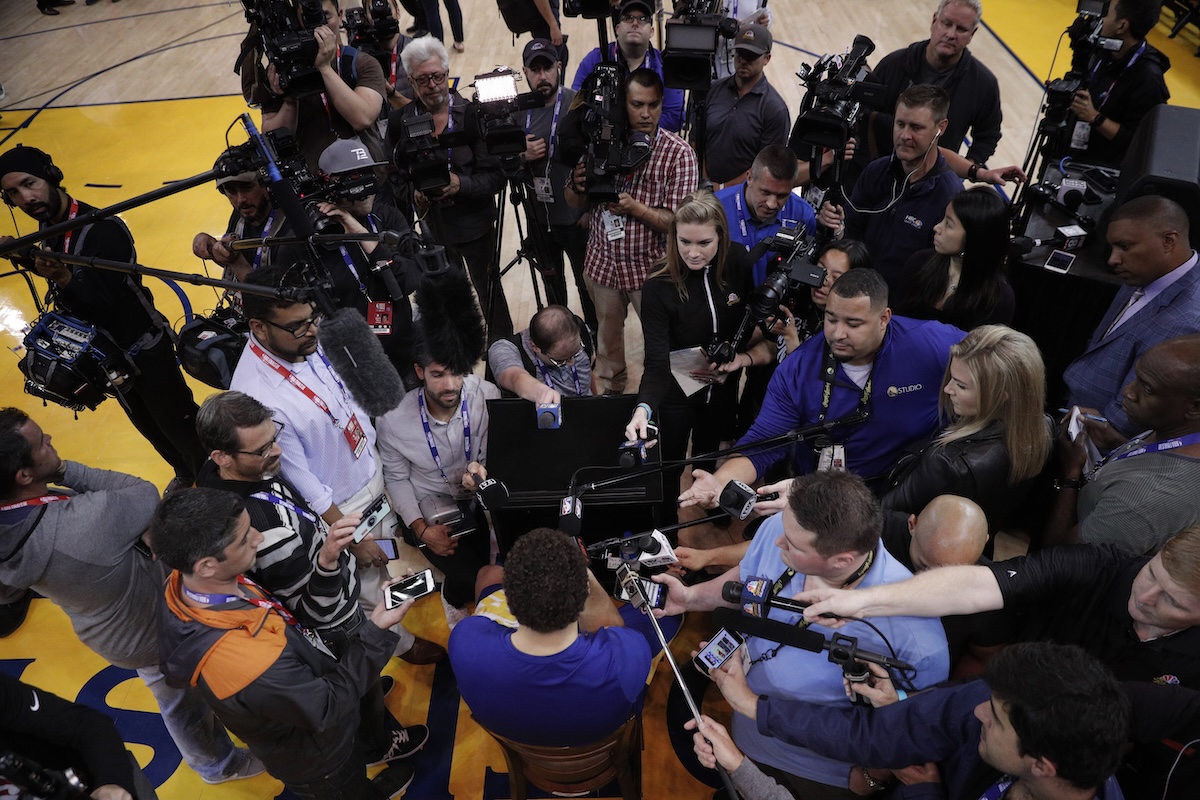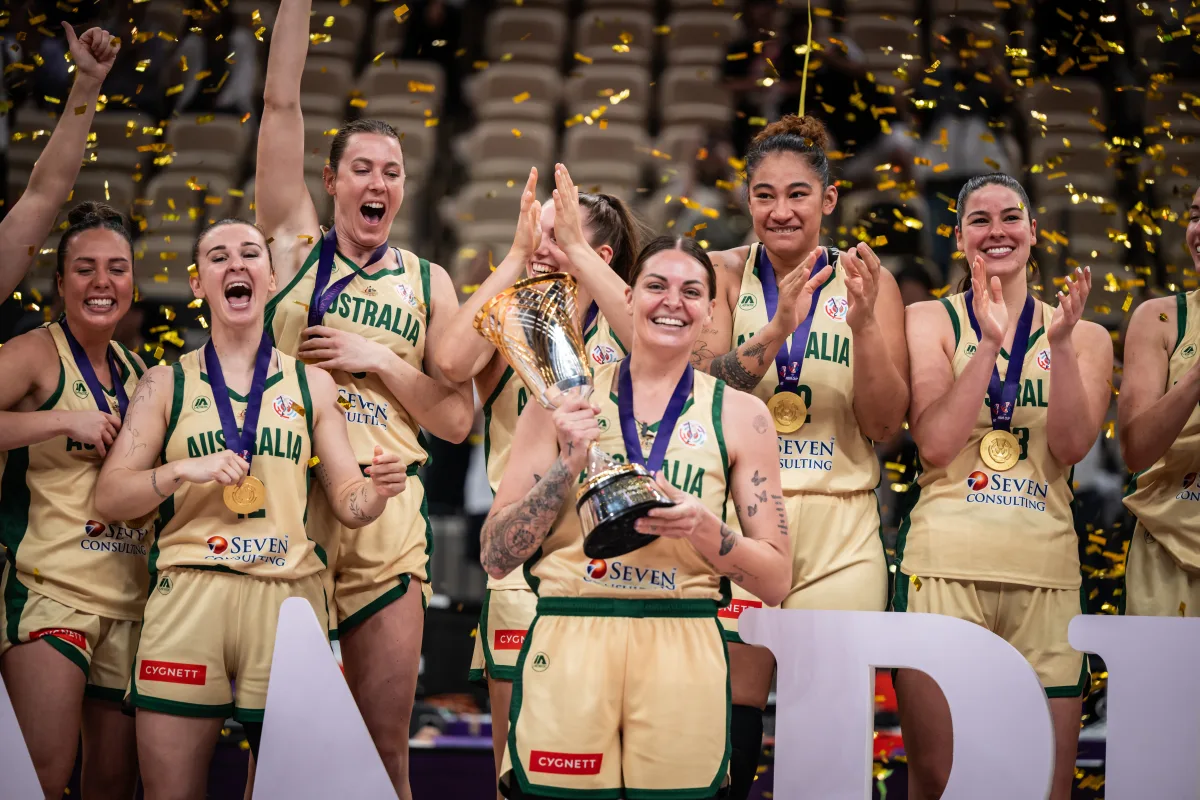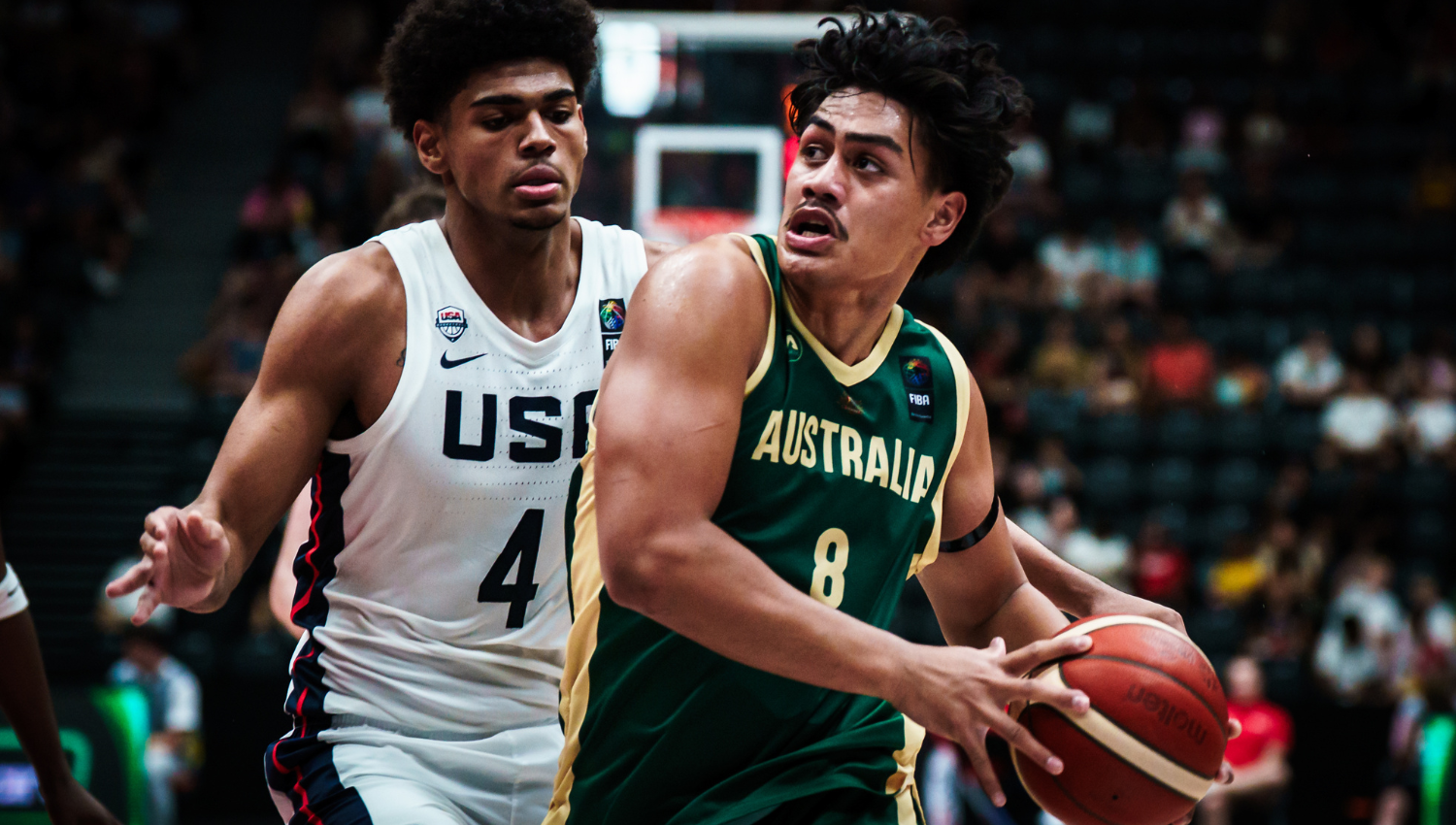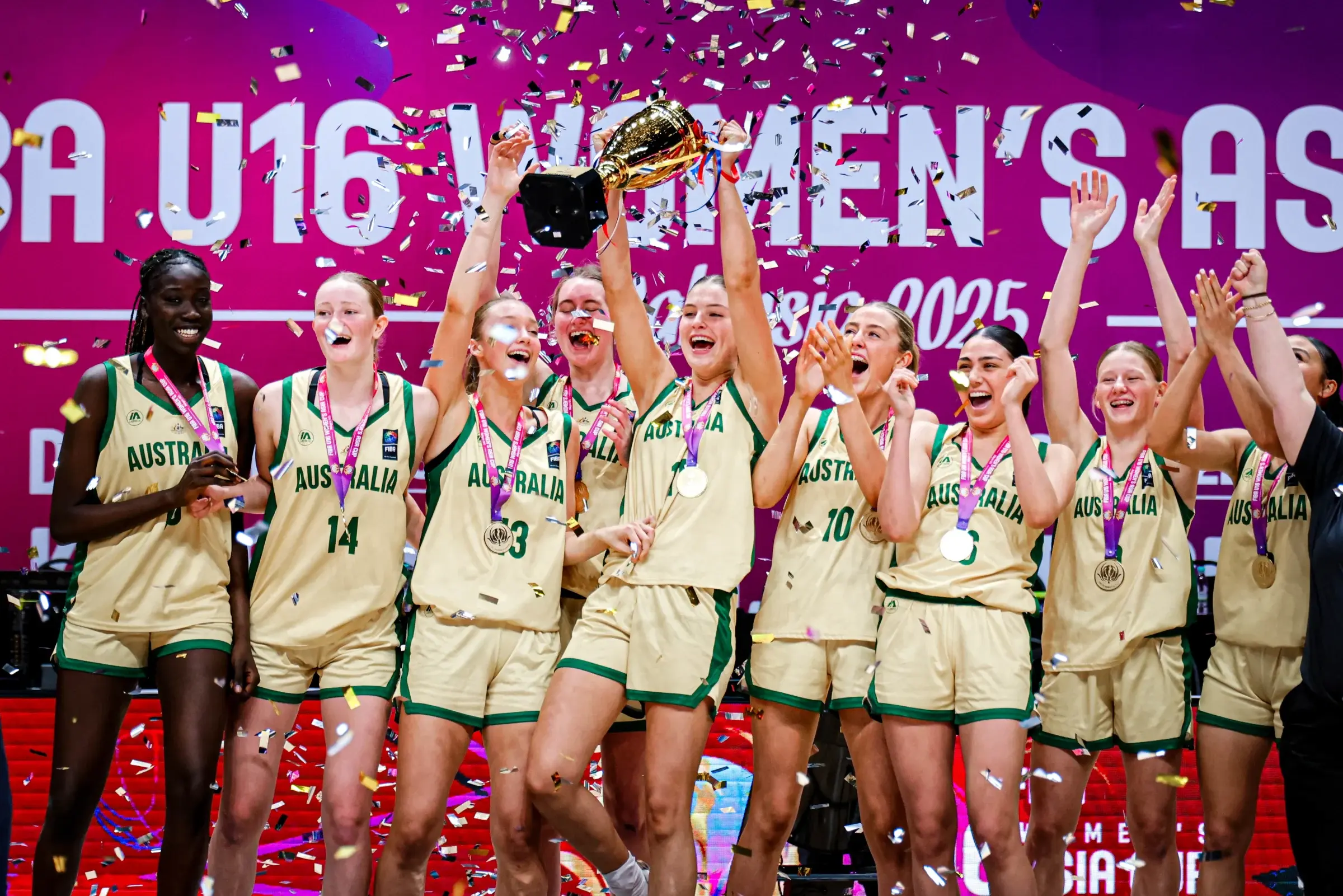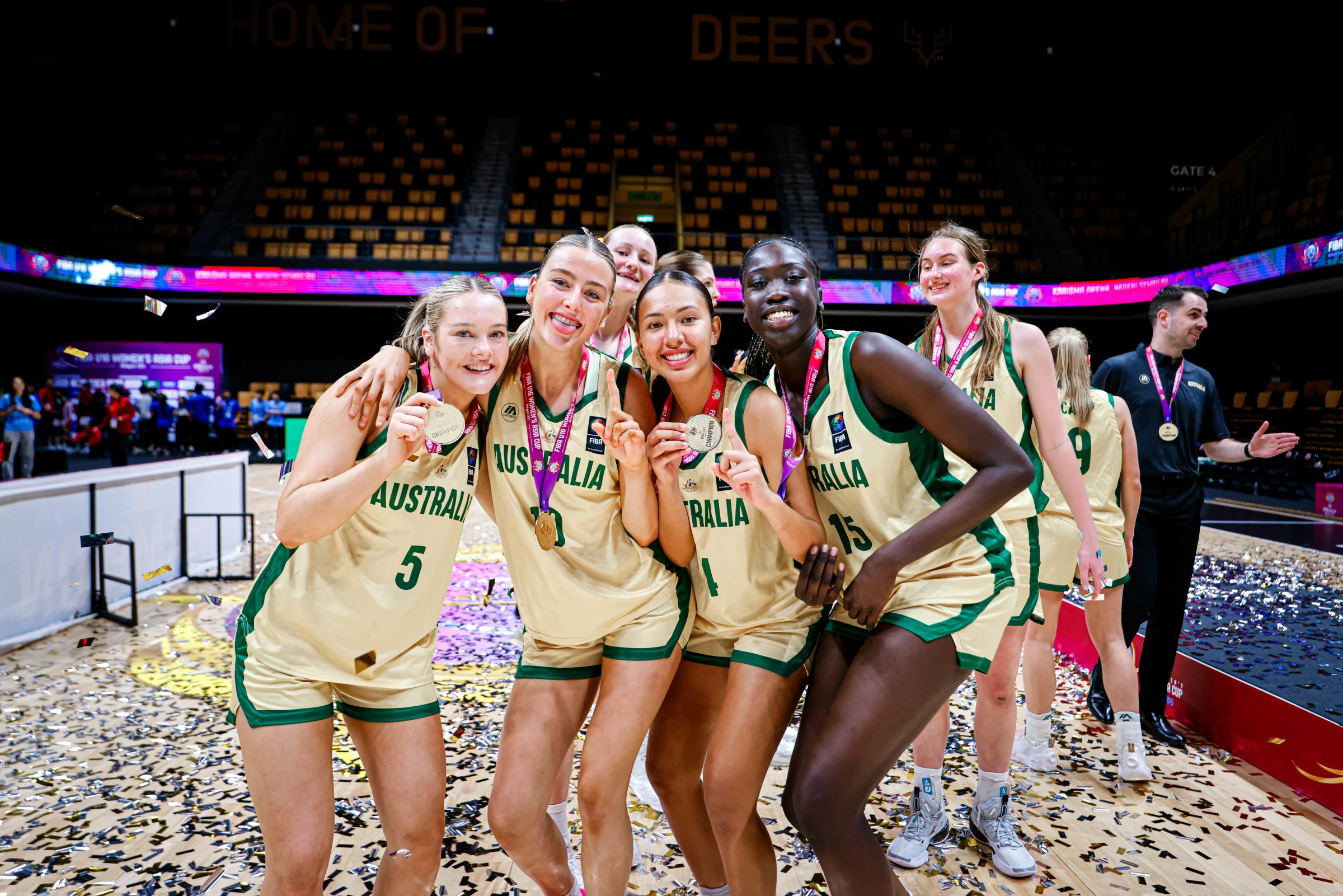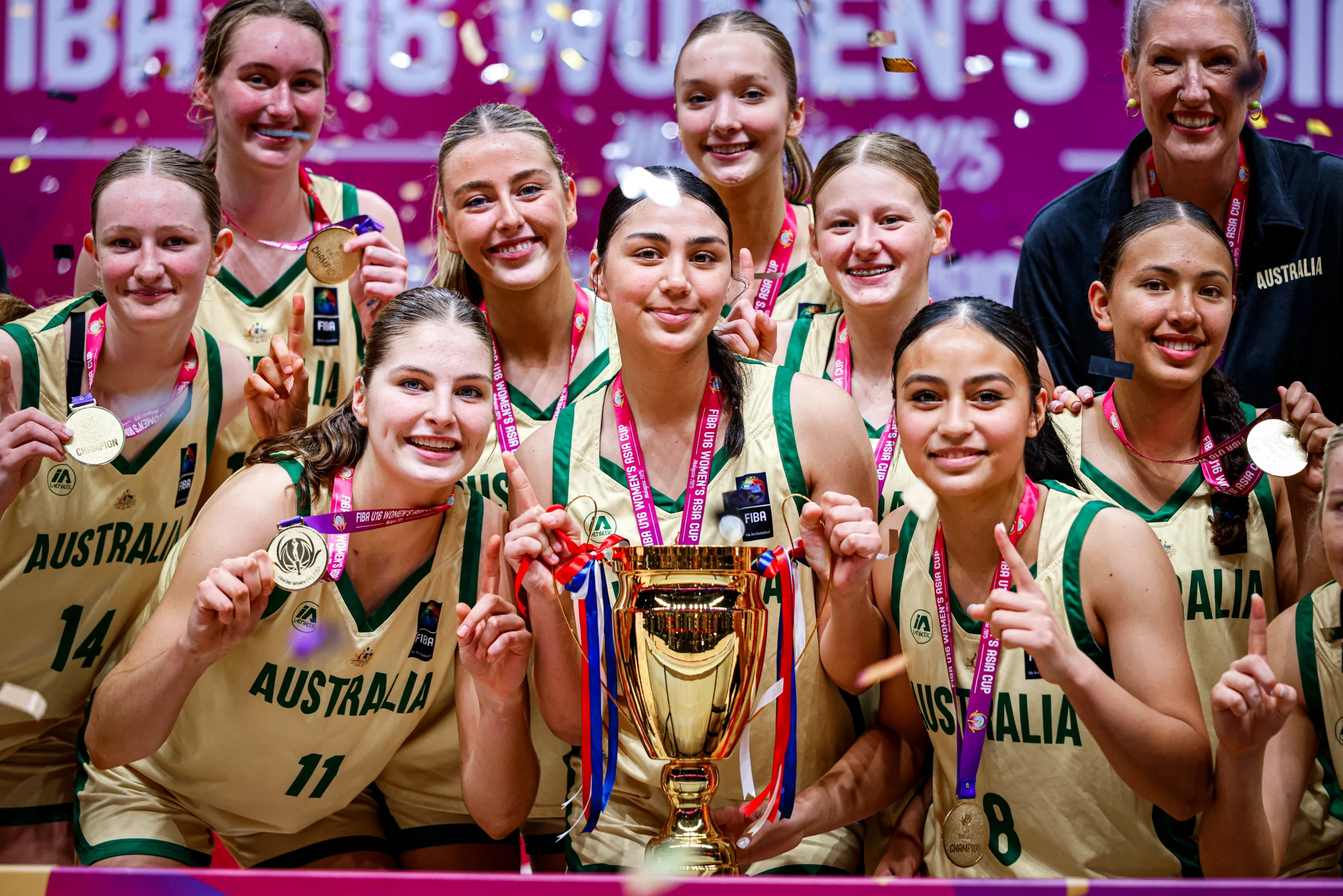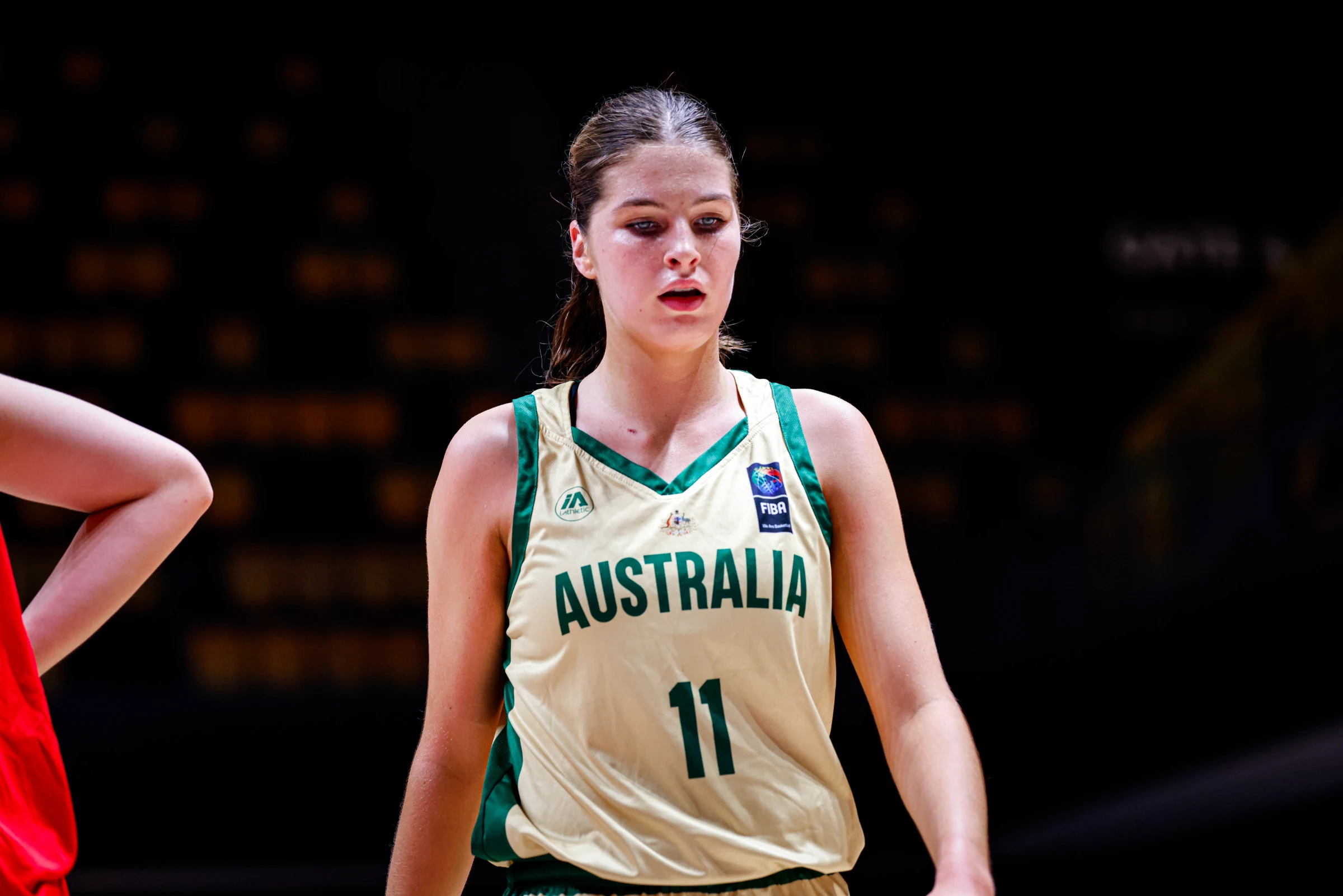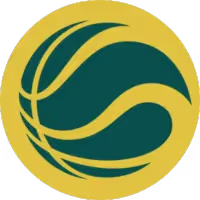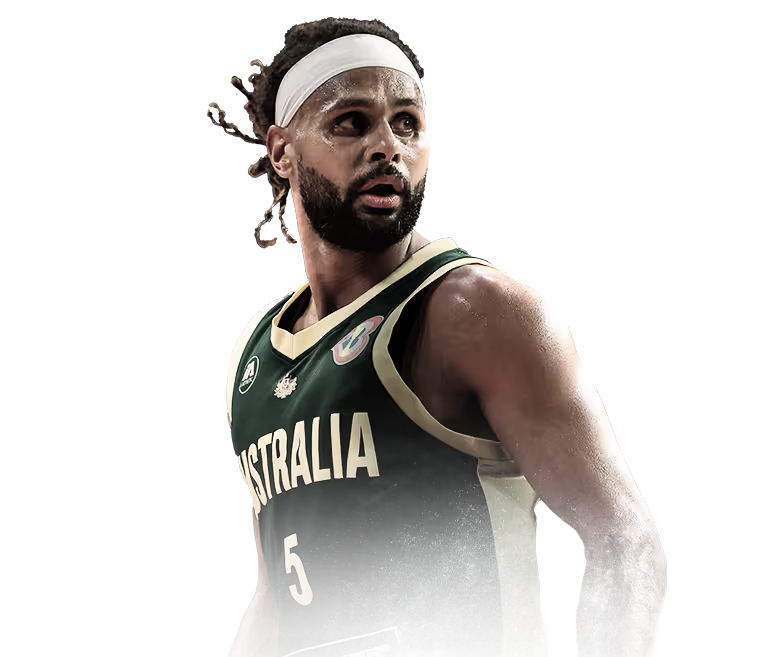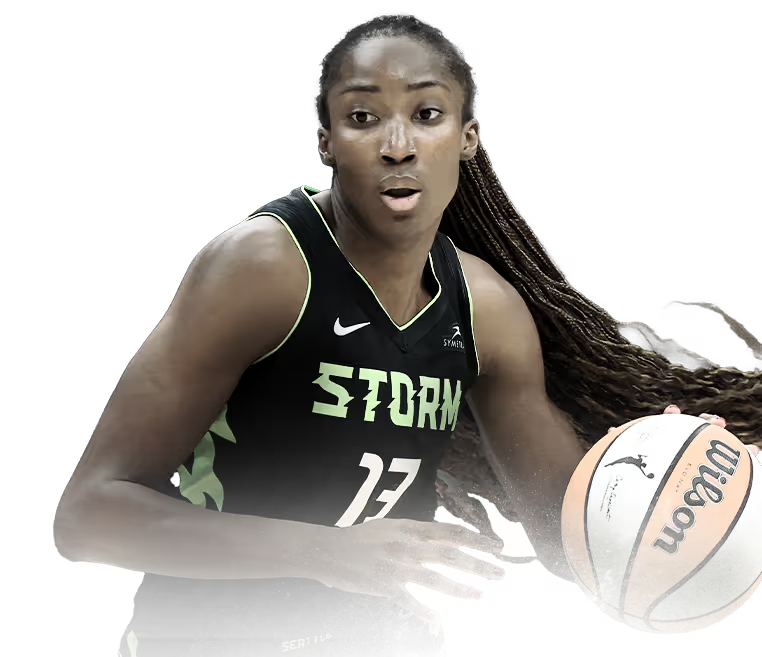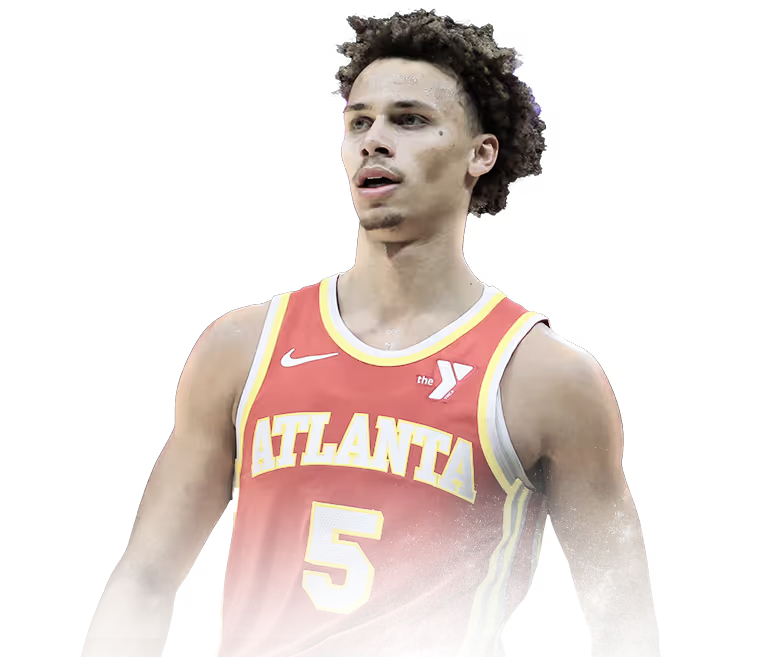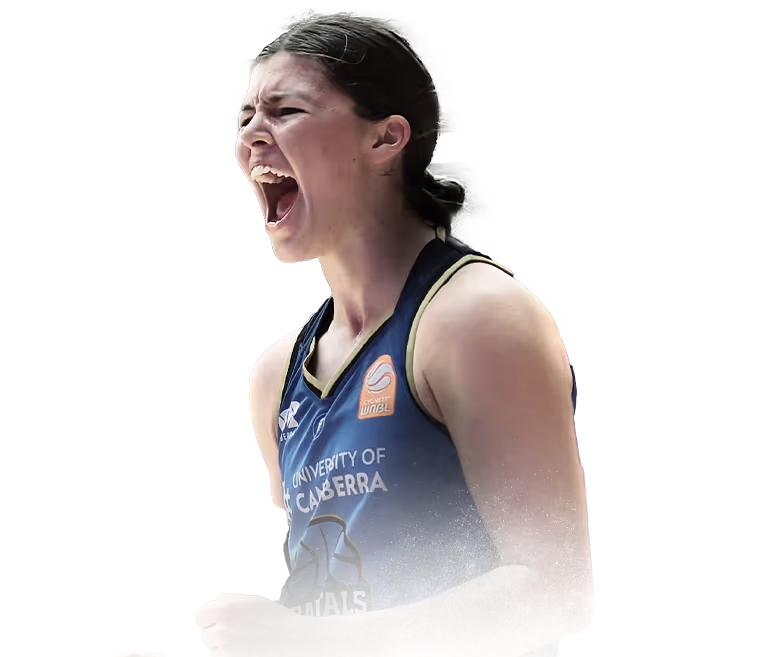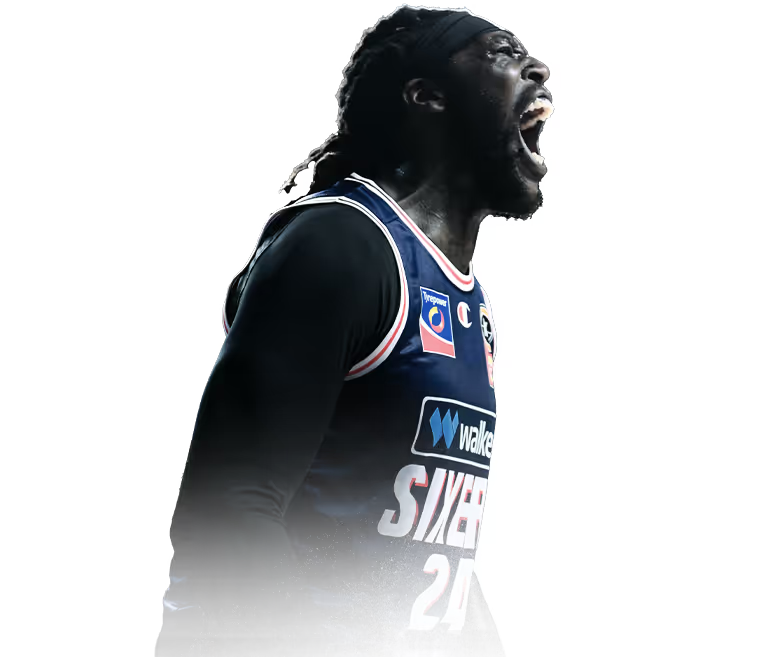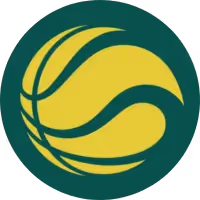

23
Jul
U19 World Cup
Gems Notebook: How Australia shone on the world stage
Hayley Wildes on what we learned from the Gems' silver performance at the 2025 U19 World Cup.
- 'Chemistry' is jewel in crown for U19 Gems squad
- Head coach Renae Garlepp comes full circle with Australian Gems
- Gems moulded into U19 World Cup silver medals
It truly was an incredible past week for Australian women’s basketball, with the Opals claiming FIBA Women’s Asia Cup gold and then just hours later, the Gems took it right up to the USA in the final of the FIBA U19 Women’s World Cup, coming away with a silver medal.
The two tournaments showcased the present and future of Australian basketball, and it’s fair to say as a country we are in great shape to compete on the world stage.
Winning the silver medal is a credit to everyone involved with the Gems, and when you dive in deeper, it becomes even more impressive when you consider the obstacles they overcame.
Without two players that would’ve started on this squad in Lara Somfai and Saffron Shiels – both of whom were All-Star Five members of the 2024 FIBA U18 Women’s Asia Cup and were unavailable due to injury for this tournament – the Gems turned to youth and I don’t think many teams would be able to start a 16 and 17-year-old (Madi Ryan and Sitaya Fagan) each game and come away with success.
Drawn to the ‘group of death’, which unfortunately didn’t include Mali after they were forced to withdraw on the eve of the tournament due to visa issues, Australia (ranked fifth) still had to face basically a must-win game against the fourth-ranked French team.
A loss would’ve seen the Gems crossover to USA’s side of the draw, and everyone knows that is the side you don’t want to be on.
They met that challenge head-on and came away with a nail-biting 70-66 win.
Bonnie Deas The Leader
For those that were unaware prior to this tournament, they now know that Bonnie Deas is going to be a freshman to watch at Arkansas University heading into the 2025/26 NCAA women’s basketball season.
She was simply relentless on both ends of the court for the Gems, diving for more loose balls than you could keep up with, hitting game-changing triples, knocking down clutch free throws and consistently forcing her way into the paint to create for herself and her teammates.
Averaging 12.3 points, 7.7 rebounds and 3 assists per game, Deas was awarded All-Star Five honours. She was the leader of the Gems and as Deas went, so did her teammates.
Her triple with just 51 seconds remaining in overtime against Hungary was monstrous, but the highlight of the tournament for me was her ridiculous block against France. It typified the type of player Deas is. France’s Stella Kessler thought she had beaten Australia’s defence, but Deas came from the weak side defence under the bucket and swatted the shot away.
It’s plays like that which provide infectious energy to a team and Deas provided countless moments of inspiration for the squad.
I’ve never witnessed a better game by someone that shot 2/15 from the field than when Deas finished with a shooting percentage of just 13.3% against Hungary in the quarter-finals, but she was everything the Gems needed, which might sound crazy if you look at just the stats. Her impact on the game went far beyond her shooting percentages.
At times she played a lone hand in driving to the bucket and although she missed many lay-ups, it was creating second-chance opportunities for the Gems and wearing down Hungary’s defence at the same time.
For all the shots missed, Deas was composed and stayed the course when many would’ve wavered, and her 12/12 shooting from the free throw line kept Australia in the game and eventually pushed them to the overtime win.
Super Coach Renae Garlepp
Renae Garlepp had a masterful tournament and was duly recognised by being named the 2025 FIBA U19 Women’s World Cup Best Coach.
Prior to the tournament, Garlepp told basketball.com.au the Gems were “going to be fun and gritty, and we want to get our hands dirty and be super physical”, and it’s fair to say they followed her lead on that.
Not only were they exciting to watch and the skill of each individual player shone through, but they were also tough as nails and competed on every single possession.
The way the offence hummed was a credit to the ball movement and offensive sets run by Garlepp, while the sense of desperation and teamwork on defence was evident for all to see.
Garlepp’s willingness to change line-ups out of half-time and go with the hot-hand or players that were feeling it that day was another aspect of her coaching that I loved. T
oo often, coaches resort back to their initial starting five out of half-time, but Garlepp consistently switched things up by rewarding players that had performed well in the first half. Garlepp is quickly rising up the Australian coaching ranks, and with roles on four different teams, she is only getting better.
Currently head coach of the Gems, the Norths Bears NBL1 women, and an assistant with the Opals and Sydney Flames, Garlepp is one to keep an eye on.
Age Is Just A Number
As I mentioned earlier, having two bottom-age players in the starting five is a sign of just how good Madi Ryan and Sitaya Fagan are, and they didn’t just start, they altered games and gave the Gems such versatility.
Ryan shot out of the blocks and announced herself to the tournament with a first quarter to remember in the opening game against Brazil.
She scored a ridiculous 10 points in a row in just 1:08 of game time in the first quarter and finished with a game-high 22 points on 9/11 shooting from the field.
Still just 16 years old, incredibly Ryan will be eligible to play in the 2026 FIBA U17 Women’s World Cup in Czech Republic, highlighting just how young she is.
Sitaya Fagan is the talk of the college basketball world, and although she already had just about every major college program chasing her commitment, after her stellar play at the World Cup, those programs will be more desperate than ever to get her signature.
Fagan does things on the court that just make you say ‘wow’.
She’s uber athletic and takes advantage of that on both ends, whether it’s taking the ball in transition and finishing through the defence or swatting shots away that she had no business in contesting, let alone getting a hand on.
That chasedown block in the second quarter of the final against USA was otherworldly.
No one would’ve batted an eyelid if she gave up on the play and USA’s Kayleigh Heckel got the easy fastbreak lay-up, but Fagan came from a mile back to get the block and send a message; there will be nothing easy today.
The Bench Mob
The starting five for the Gems all contributed greatly to the silver medal, but just as important was the bench mob, who came in every game and kept the team’s play at an elite level.
Some countries were able to compete with the Gems for stretches, but the depth of the squad just overran and overpowered opponents.
Manuela Puoch, Prasayus Notoa, Monique Bobongie, Zara Russell and Sienna Harvey all had big moments throughout the tournament and showcased their talents to the world.
It just felt like the Gems were a better team when Puoch was on the floor. Her inside presence and rebounding were exactly what they needed, and her strong screens got her teammates open.
Notoa was super-efficient, averaging 7.5 points, 5.5 rebounds and 2.7 assists per game on 55% shooting from the field and 46.7% from deep. She added another dimension to the Gems and is one of those skilled forwards of the future for Australian basketball fans to keep an eye out for.
While Bobongie had her struggles with turnovers (team-high 2.7 per game), she just hit big shot after big shot throughout the tournament. When the Gems needed a three-pointer to fall, so often she delivered, and those buckets were worth their weight in gold.
Bobongie is a big shot maker. Zara Russell turned in a game-changing performance against Canada in the semi-final, knocking down three triples and finishing with an equal team-high 14 points as five Gems scored in double figures.
Sienna Harvey gave University of Washington fans a taste of what’s to come as the Washington-commit put together a highlight reel few could match at the tournament.
She was dishing assists behind her back and over her head, pulling out hesitation, spin and euro-step moves that had opponents scratching their heads, and was at her best against USA.
She helped keep Australia close for much of the game and was giving USA plenty of defensive issues, finishing with 11 points, 5 assists and 4 rebounds.
Bright Future For Australian Basketball
What a past 12 months it has been for Australian women’s basketball!
The Opals have won Olympic bronze and Asia Cup gold, while the Gems have won U18 Asia Cup gold and U19 World Cup silver.
Our women’s national teams have always competed against the best in the world and done so with pride and passion, and to see that continuing into the next generation of stars is what it’s all about.
The Gems put on a show at the 2025 FIBA U19 Women’s World Cup, and you get the feeling it’s a squad filled with future Opals, WNBL stars, college standouts and WNBA players. The future of Australian basketball is in great hands.
Exclusive Newsletter
Aussies in your Inbox: Don't miss a point, assist rebound or steal by Aussies competing overseas. Sign-up now!


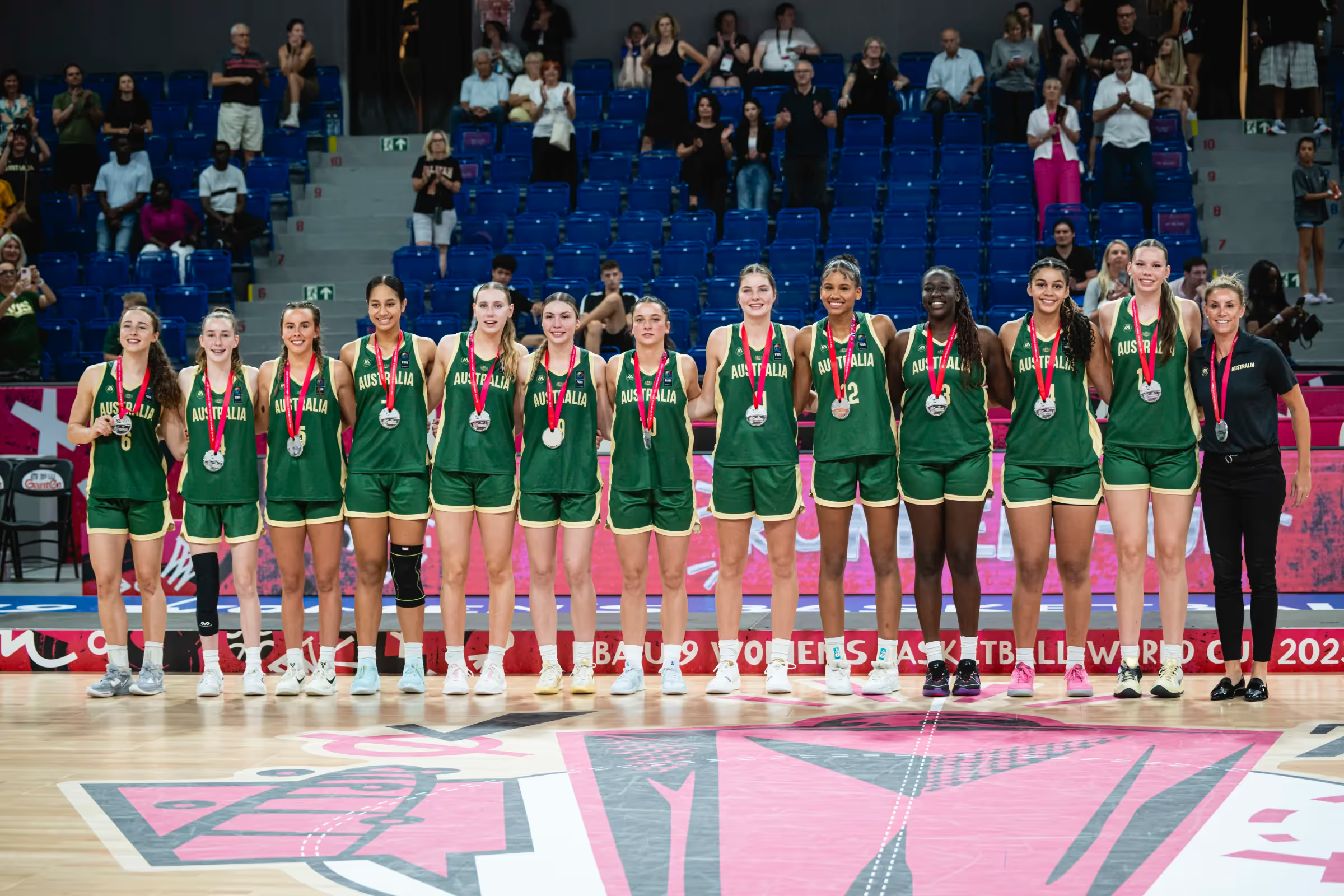
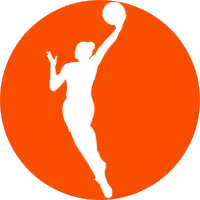

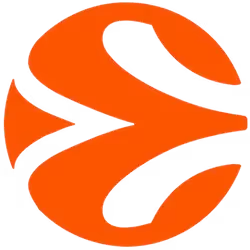
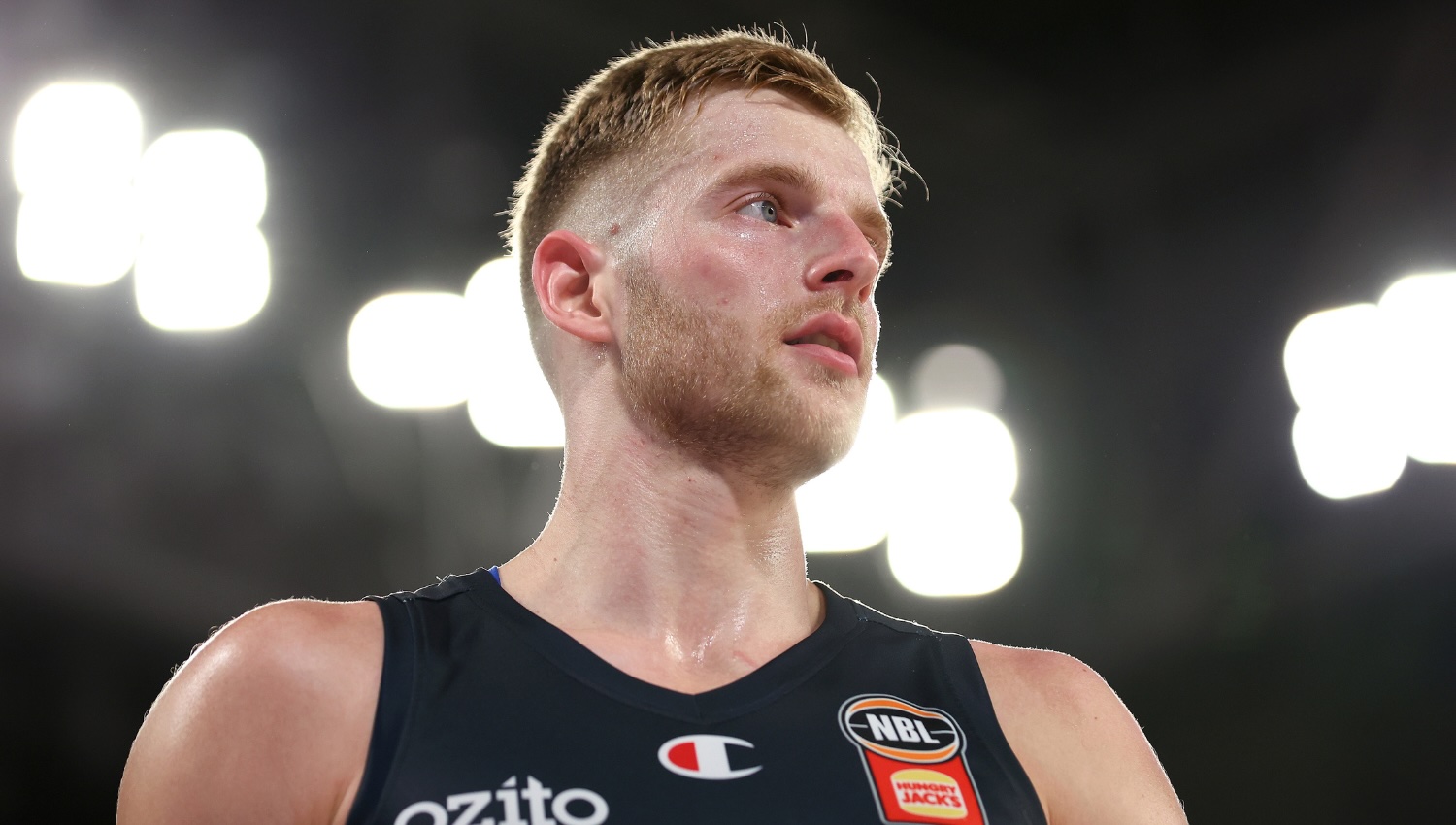
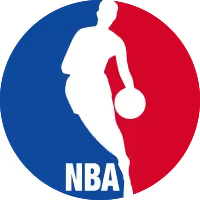

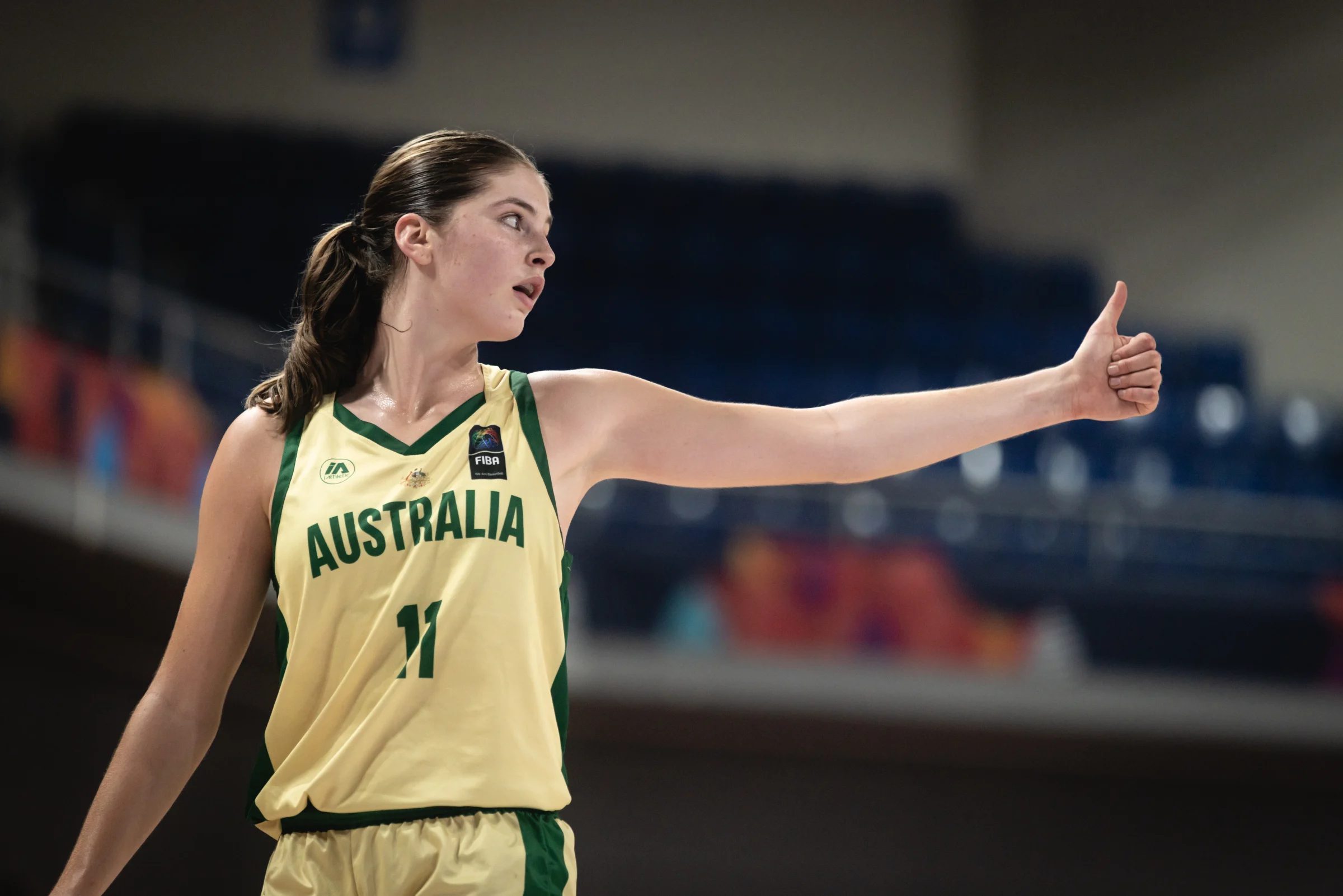
.png)


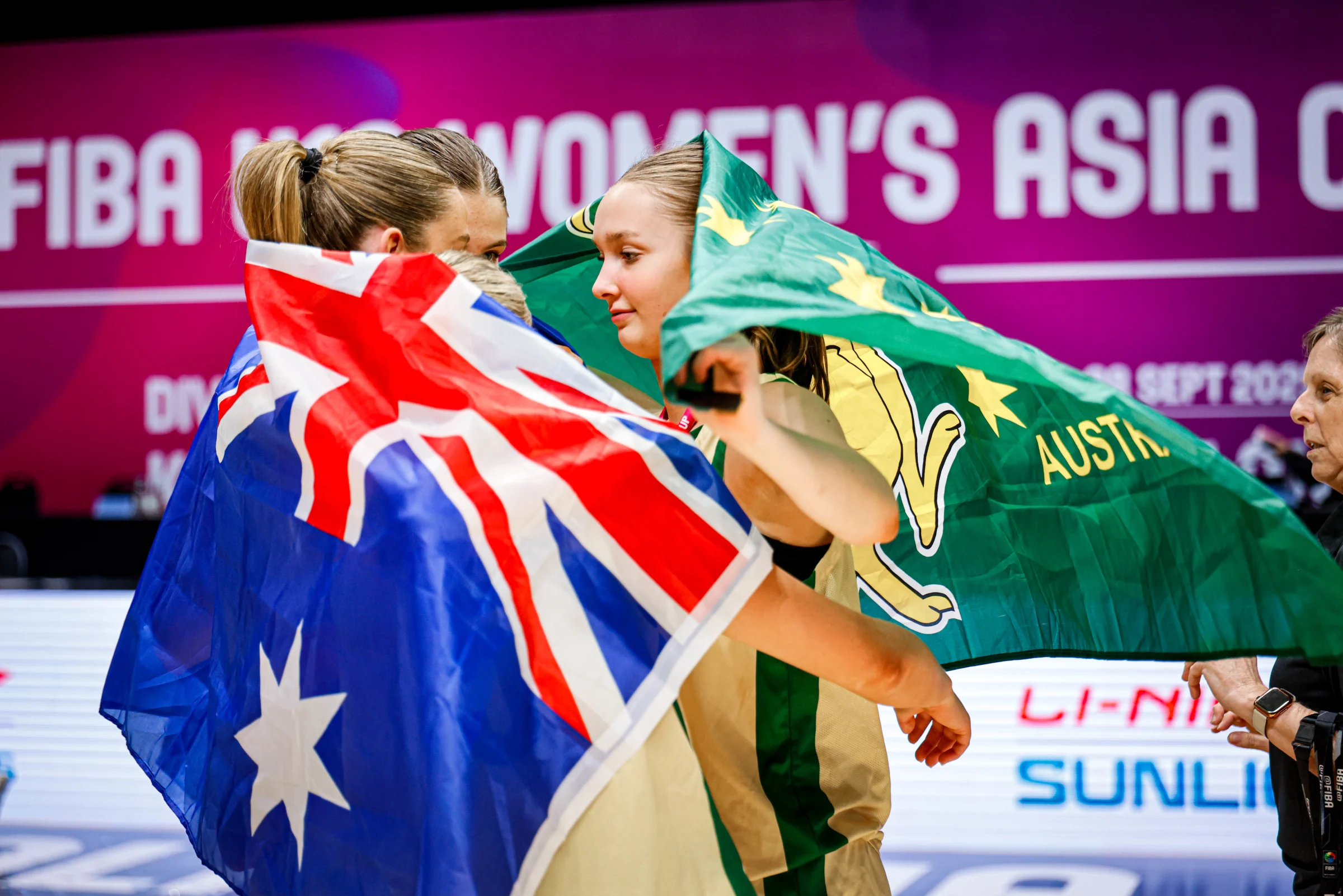

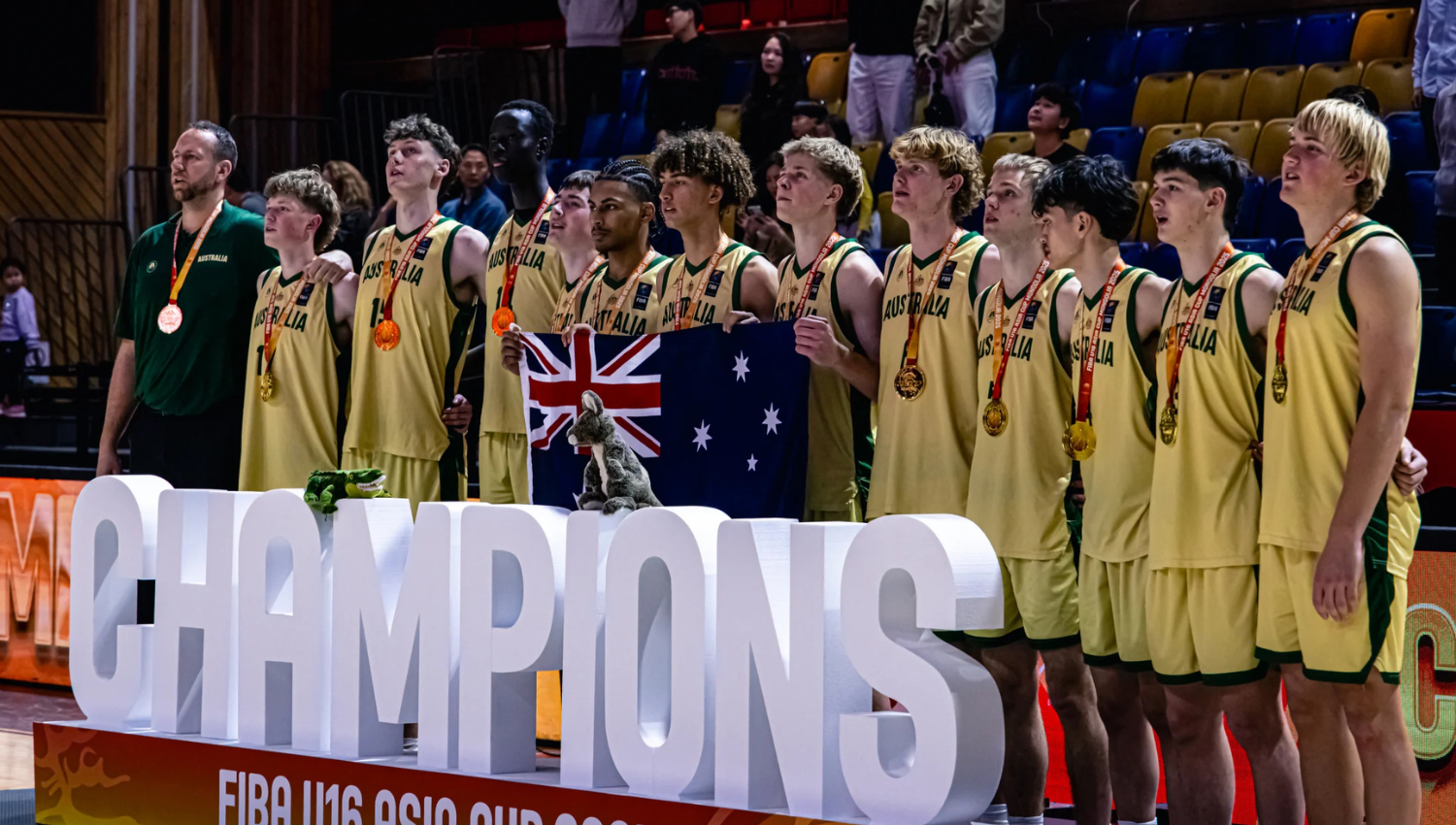

.png)

